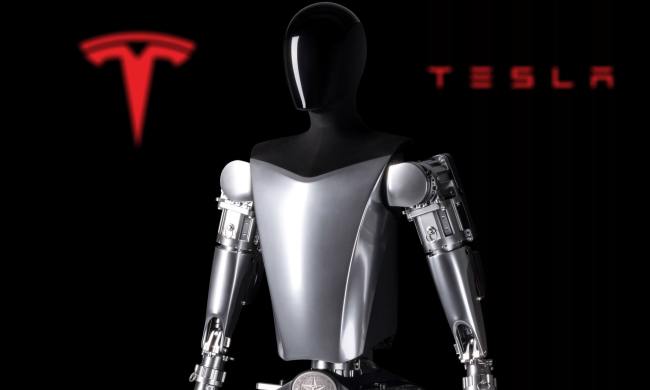The Cybertruck received tremendous attention, as it will compete against America’s most popular vehicles and it’s shaped like nothing else on the road. But I think the Tesla Model Y, now due out in early 2020, is Tesla’s next superstar.
I’m confident it will dethrone the Model 3 and become the company’s bestseller if Tesla manages to execute a smooth launch – and the company’s Q4 earnings call provided plenty of reasons to be optimistic.
Everybody loves crossovers
Revealed in March 2019, the Model Y is a more spacious version of the Model 3, and a smaller alternative to the Model X, though without the unorthodox gull-wing doors.
Pricing for the rear-wheel drive Long Range model starts just under $47,000, a figure that makes it about $13,000 more expensive than a base Model 3. However, that’s unlikely to represent a deal breaker, as the average Model 3 owner spends about $50,000, according to Bloomberg.
Tesla pledged to release a base variant of the Model Y priced at $39,000, though it has disappeared from its website and is now planned for 2021. Regardless, car shoppers have shown they’ll happily pay more for a crossover than for a comparable sedan or station wagon.

Take a look at Audi. In 2019, its American division sold 26,435 A4s, compared to 69,978 Audi Q5s. They’re priced at $39,200 and $43,300, respectively. Lexus sold 51,336 examples of the ES ($39,900), but hit 111,036 RXs ($44,150).
This trend isn’t luxury-specific, either. The Toyota RAV4 outsold the cheaper Camry by over 100,000 units last year. Even the Tesla Model X, which by most accounts is a poor excuse for a crossover in an increasingly crowded segment, found more buyers than the Model S, an excellent sedan whose only direct rival is the Porsche Taycan.
The value of SUVs even translates to the used market, where used SUVs are often thousands of dollars more than sedans from the same model year.

Crossovers and SUVs represent 53% of Volkswagen’s American sales, a number expected to grow again in 2020. And Ford is axing all of its sedans and hatchbacks to focus on high-riding models.
Put simply, drivers are chanting “crossover good, sedan bad,” as they commute in increasingly massive vehicles. Those looking for an electric car that’s more spacious than a Model 3, and cheaper than a Model X, will welcome the Model Y like a chariot sent from the heavens.
Production won’t be a problem
Other factors enter this equation, and whether the Y casts a shadow on its sedan sibling ultimately depends on how quickly Tesla manages to reliably mass-produce it. Ramping up production of the Model 3 was a complicated and painfully slow process.
Fortunately for Tesla, the Model Y is proceeding quickly. The company now plans to bring the Model Y to market in the first quarter of 2020, months ahead of the original schedule. Production has already begun at Tesla’s factory in Fremont, California.
Tesla has learned from its mistakes and is now producing cars at much higher volumes than critics expected. It managed to deliver 300,815 units of the Model 3 sedan to customers around the world in 2019. For context, it made 146,055 examples of the car in 2018, and it only manufactured 1,764 3s in 2017, the year it began production.
According to Tesla, the company “should comfortably exceed 500,000 units” in 2020. That may not be enough to make the Tesla Model Y a top seller in its first year, but it’ll be off to a good start. Most of those additional units will no doubt go to the Tesla Model 3 and Model Y, which are far more affordable than other vehicles in its line.
How did Tesla manage to push up the Model Y’s release date? Efficient design. The crossover shares 75% of its parts with the Model 3. Three-quarters of the components required to build the car are already being built including the lights, the door handles, powertrain parts, and nearly everything inside (like the touchscreen).
Tesla’s Model Y won’t be without competition
There’s one crucial point Tesla needs to keep in mind as it finishes testing the Model Y and prepares to deliver the first examples to paying customers. The competition is wide awake. The Model 3, the Model X, and the Model S competed in a class of one when they reached the market, but the Model Y won’t enjoy that peace of mind.
It will need to fend off an offensive led by the formidable Ford Mustang Mach-E, the production version of Audi’s Q4 E-Tron concept, the California-friendly Fisker Ocean, among many others. The burgeoning segment will grow exponentially during the 2020s so increased competition won’t prevent the Model Y from outselling the Model 3; there will be room for everyone, and then some. The trade-off is that automakers who settle for delivering a subpar product will quickly get elbowed out of this extremely competitive space.
That’s why the Model Y is a make-or-break car for Tesla. The California-based firm will lose a significant number of sales if it doesn’t stick the landing.
However, if it does – and I think it most likely will – you can expect to quickly see a Model Y on every street corner as it takes the torch from the Model 3.



